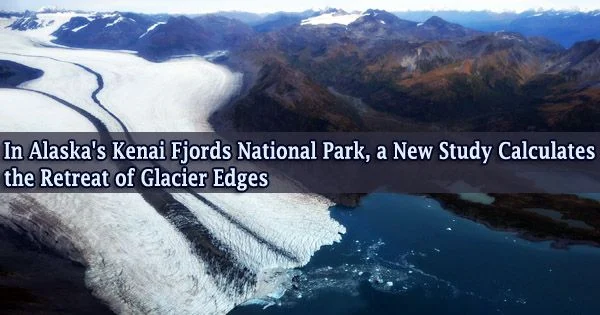National park administrators must be aware of impending changes in order to plan for the future as glaciers throughout the world retreat as a result of climate change. The gorgeous Kenai Fjords National Park, located approximately two hours south of Anchorage, is home to glaciers that have undergone 38 years of change, according to a recent research by the University of Washington and the National Park Service.
According to the research, which was published on August 5 in The Journal of Glaciology, 13 of the 19 glaciers are significantly retreating, while four are largely steady, and two have advanced.
Additionally, it identifies patterns in the fastest-disappearing glacier kinds. Numerous glaciers can be found inside the park’s almost 670,000 acres; some end in the ocean, while others do so in lakes or on land.
“These glaciers are a big draw for tourism in the park they’re one of the main things that people come to see,” said lead author Taryn Black, a UW doctoral student in Earth and space sciences. “Park managers had some information from satellite images, aerial photos, and repeat photography but they wanted a more complete understanding of changes over time.”
Lake-terminating glaciers, such the well-known Bear Glacier and Pedersen Glacier, are retreating at the fastest rate, according to the research. Between 1984 and 2021, Bear Glacier receded by 5 km (3 miles), and Pedersen Glacier retreated by 3.2 km (2 miles) over that time.
“In Alaska, much glacier retreat is being driven by climate change,” said Black. “These glaciers are at really low elevation. It’s possibly causing them to get more rain in the winter rather than snow in addition to warming temperatures, which is consistent with other climate studies in this region.”
Unexpectedly, Holgate Glacier, a tidewater glacier that terminates at the ocean, has been moving forward lately. In 2020, local boat captains had mentioned seeing newly exposed land close to the glacier’s edge.
Interpretation and education are also an important part of the National Park Service mission. These data will allow us to provide scientists and visitors with more details of the changes occurring at each specific glacier, helping everyone to better understand and appreciate the rate of landscape change we are experiencing in this region.
Deborah Kurtz
However, the new analysis reveals that the glacier has been moving forward as a whole for nearly 5 years and seems to advance and retreat in predictable cycles. Most of the other tidewater glaciers’ edges remained largely constant throughout the study period.
The six glaciers that terminated on land all displayed a mixed response, with most retreating, especially during the summer, albeit at a slower rate than the glaciers that terminated on lakes. The land-terminating Paguna Glacier, which is buried with rock debris from a landslide brought on by the 1964 Alaska earthquake, was the only other glacier to advance throughout the research period. The glacier’s surface is protected from melting by this material.
Black traced the outlines of each of the 19 glaciers, for a total of around 600 outlines, using 38 years’ worth of satellite pictures taken in the fall and spring. To locate where the glacier’s margin was, she visually examined each photograph.
Black recently calculated the rate of retreat of marine-terminating glaciers in west Greenland using a similar methodology.
The updated data for Alaska provide as a foundation for research on how these glaciers will continue to be impacted by climate change, including increased air temperatures and changes in both the types and amounts of precipitation. Due to their exposure to the humid, warm maritime climate, all of the glaciers in the research are classified as maritime glaciers.
Park management can immediately put the study to use. These figures aid in putting a numerical value on the changes that have been taking place and will continue to affect glaciers and the areas around them.
“We can’t manage our lands well if we don’t understand the habitats and processes occurring on them,” said co-author Deborah Kurtz at the U.S. National Park Service in Seward, Alaska.
Kurtz is also interested in the changes to the nearby river, lake, and landscape ecosystems and how to communicate those changes to the general public as the manager of the park’s physical science program.
“Interpretation and education are also an important part of the National Park Service mission,” Kurtz said. “These data will allow us to provide scientists and visitors with more details of the changes occurring at each specific glacier, helping everyone to better understand and appreciate the rate of landscape change we are experiencing in this region.”
Originally meant to be an internship at Kenai Fjords National Park, this study was conducted as a component of that program. Instead, Black conducted the study virtually from Seattle and paid a visit to the area’s glaciers at Mount Rainier.
Part of this research was funded by the National Park Service’s Future Park Leaders program, a partnership between the Ecological Society of America and the U.S. National Park Service.





